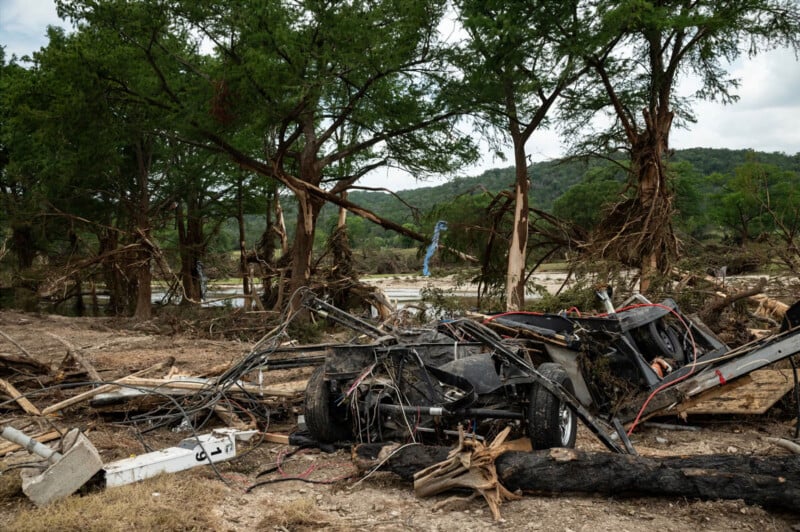‘I Started Crying’ Says Photographer Who Covered Deadly Texas Flooding
![]()
At the start of a tough multi-day assignment to cover the Texas floods, a news photographer based in San Antonio visited a family reunification center and met someone so laden with grief that the photographer wept.
“I started crying,” recalls photojournalist Salgu Wissmath, on assignment for The Wall Street Journal.
Like other photographers covering the aftermath of deadly flooding, Wissmath was in the field since Saturday, July 5. A freelancer, Wissmath uses Nikon equipment with zoom and wide-angle lenses.

“I try to get as much sleep as possible and take care of my physical needs. Stay hydrated. Take electrolytes. Each day, I pack a lunch and bring snacks, water, and extra batteries. I have extra clothes in my trunk along with a hard hat and safety vest,” said Wissmath, who drives an hour one way to help cover the flood story.

The Big Picture
From Genesis to Shakespeare, floods and flood metaphors have inspired awe. Bestselling author Dean Koontz says blizzards, floods, volcanoes, hurricanes, and earthquakes fascinate because they nakedly reveal the unpredictable power of nature.

“When children die, grief is exponential,” summed up a poignant front-page headline in the print edition of The Washington Post published July 8.
Photo Subjects Faced Immense Trauma
People who face loss or have experienced loss can be extra sensitive about privacy and dignity, the photographer says.
Wissmath’s approach: “I get permission. When you ask permission, you get ‘no’s,’ but I respect that.”

The balance between the news-gathering imperative to tell the story and respect for victims, survivors, and families is “delicate,” says an experienced photo editor in Houston.
“As a photo editor, I look for images and video that show the scale of the disaster, along with the human moments that connect us emotionally — like the reunifications,” says Jill Karnicki, photo editor at the Houston Chronicle. “These can be delicate to document, so we emphasize compassion and respect for those affected while still doing our job to inform the public.”

“As a manager and a human, I also want to make sure every journalist in the field has space to talk through any trauma they may be experiencing while covering this devastation. These stories hit close to home, especially since many of us have family and friends personally affected by the flooding.”

Wissmath gives The Wall Street Journal high marks for insisting on personal security and having exit plans.
“I share my location with other photographer friends who are also working in the area, and that gives me a sense of security,” says Wissmath.


Credentials
Salgu Wissmath was a Photo Fellow at the San Francisco Chronicle and San Antonio Express-News (2022-2024), earning a master’s degree from Ohio University’s School of Visual Communication in 2018. Wissmath’s work has been honored by the Curve Foundation, the Asian American Journalists Association (AAJA), and National Press Photographers Association (NPPA).
Jason Fochtman joined the Houston Chronicle in 2017; he graduated from Texas Christian University in 2009. Fochtman’s work has been honored via the Texas Managing Editors Awards and the Texas Press Association.
Jill Karnicki has over 18 years of experience at the Chronicle as photo editor; she studied at the University of Texas at Austin, Brooks Institute of Photography, and Ohio University.
Image credits: Salgu Wissmath for the Wall Street Journal and Jason Fochtman for the Houston Chronicle
About the author: Ken Klein lives in Silver Spring, Maryland; he is retired after a career in politics, lobbying, and media including The Associated Press and Gannett in Florida. Klein is an alumnus of Ohio University and a member of the Dean’s Advisory Council of the Scripps College of Communication. Professionally, he has worked for Fort Myers News-Press (Gannett), The Associated Press (Tallahassee), Senator Bob Graham, and the Outdoor Advertising Association of America (OAAA).